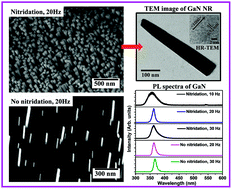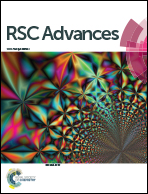Effect of surface modification and laser repetition rate on growth, structural, electronic and optical properties of GaN nanorods on flexible Ti metal foil
Abstract
The effect of flexible Ti metal foil surface modification and laser repetition rate in laser molecular beam epitaxy growth process on the evolution of GaN nanorods and their structural, electronic and optical properties has been investigated. The GaN nanostructures were grown on bare- and pre-nitridated Ti foil substrates at 700 °C for different laser repetition rates (10–30 Hz). It is found that the low repetition rate (10 Hz) promotes sparse growth of three-dimensional inverted-cone like GaN nanostructures on pre-nitridated Ti surface whereas the entire Ti foil substrate is nearly covered with film-like GaN consisting of large-sized grains for 30 Hz growth. In case of the GaN growth at 20 Hz, uniformly-aligned, dense (∼8 × 109 cm−2) GaN nanorods are successfully grown on pre-nitridated Ti foil whereas sparse vertical GaN nanorods have been obtained on bare Ti foil under similar growth conditions for both 20 and 30 Hz. X-ray photoemission spectroscopy (XPS) has been utilized to elucidate the electronic structure of GaN nanorods grown under various experimental conditions on Ti foil. It confirms Ga–N bonding in the grown structures, and the calculated chemical composition turns out to be Ga rich for the GaN nanorods grown on pre-nitridated Ti foil. For bare Ti substrates, a preferred reaction between Ti and N is noticed as compared to Ga and N leading to sparse growth of GaN nanorods. Hence, the nitridation of Ti foil is a prerequisite to achieve the growth of dense and aligned GaN nanorod arrays. The X-ray diffraction, high resolution transmission electron microscopy and Raman studies revealed the c-axis growth of wurtzite GaN nanorods on Ti metal foil with good crystallinity and structural quality. The photoluminescence spectroscopy showed that the dense GaN nanorod possesses a near band edge emission at 3.42 eV with a full width at half maximum of 98 meV at room temperature. The density-controlled growth of GaN nanorods on a flexible substrate with high structural and optical quality holds promise for potential applications in futuristic flexible GaN based optoelectronics and sensor devices.



 Please wait while we load your content...
Please wait while we load your content...